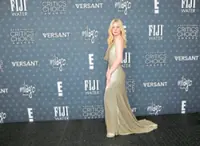The rain coat, a classic must-have, is being reinvented with recycled materials for more environmentally friendly versions. Photo: AFP
Many fast-fashion brands are finding themselves in the midst of controversies concerning the choice of their raw materials.
While cool rainy days are on their way in much of the northern hemisphere, the rain coat, a classic must-have, is being reinvented with recycled materials for more environmentally friendly versions.
Already a subscriber? Log in
Save 30% OFF The Star Digital Access
Cancel anytime. Ad-free. Unlimited access with perks.





